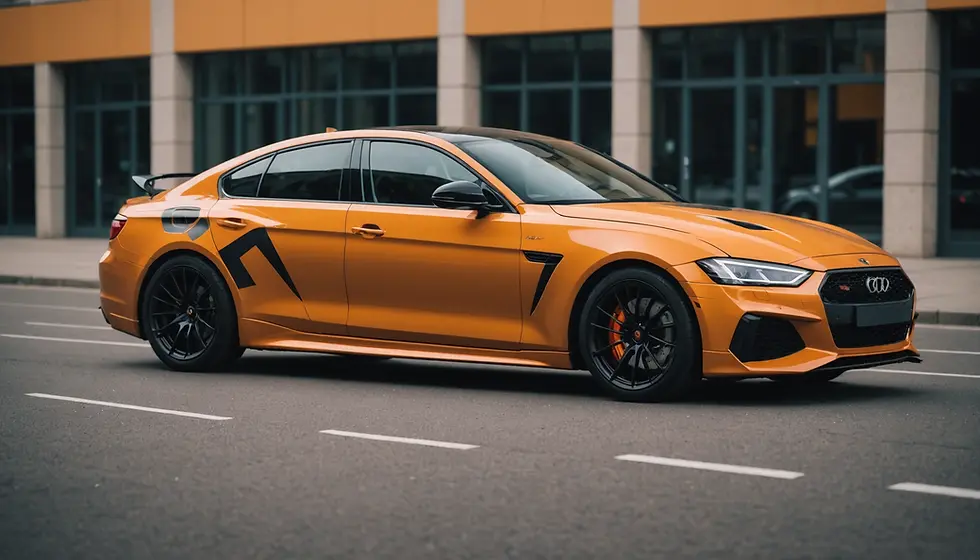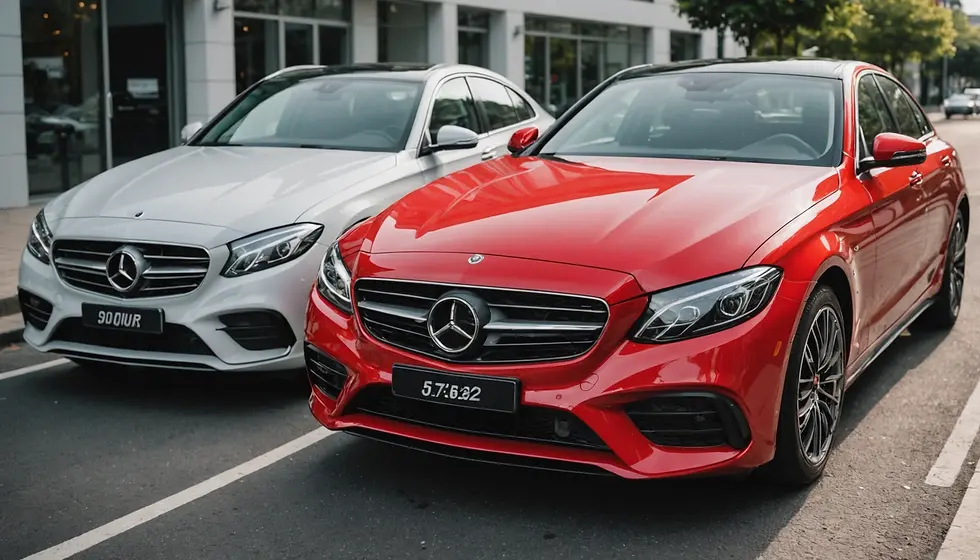Unveiling the Mystery: Exploring the 5 Key Distinctions Between Ceramic Coating and PPF
- MICAH NELSON
- Nov 30, 2024
- 3 min read
When it comes to safeguarding your vehicle's exterior, choosing the right protection method is crucial. With many options available, ceramic coating and paint protection film (PPF) emerge as popular choices. Both aim to maintain your car's appearance while protecting it from damage, yet they offer distinct benefits. In this post, we will highlight the five key distinctions between ceramic coating and PPF, providing clear insights into which option might be best for you.
1. Material Composition
Ceramic coating consists of a liquid polymer that creates a chemical bond with your vehicle's factory paint. Primarily made of silica, it forms a hard protective shell that enhances gloss and repels water and dirt. A study by the International Carwash Association found that ceramic coatings can reduce water spots and dirt adhesion by up to 90%.
In contrast, PPF is made from thermoplastic urethane and is applied as sheets over the surface. This thicker film protects against scratches, chips, and other abrasions. PPF also possesses self-healing properties, meaning minor scratches often disappear when exposed to heat. For instance, modern PPF can recover from light abrasions by up to 98% when heated—providing a continually flawless appearance.
Both protection methods serve distinct purposes, utilizing different materials to meet varying needs.

2. Application Process
Applying ceramic coating is quite meticulous. The vehicle must be thoroughly washed and, often, polished beforehand to ensure proper adhesion. This prep work is essential for achieving an even and shiny finish. Many experts recommend having a professional handle the application, as even a small error can lead to unsatisfactory results.
Conversely, applying PPF can be more user-friendly. After adequately cleaning the car's surface, you lay down sheets of the film, smoothing out any air bubbles. While DIY kits are available, professional installation is still advisable for the best results. A professional installation can often take 1-2 days, ensuring that every detail is perfect, while ceramic coating typically requires a similar time commitment for preparation and application.
The complexity of the application techniques highlights the importance of considering your skill level and the results you desire.
3. Level of Protection Offered
PPF excels in providing physical protection. Its thicker composition effectively guards against stone chips, scratches, and other impacts. Many users report that PPF significantly reduces the risk of paint damage, and its self-healing feature enhances this protection even further.
While ceramic coating offers robust protection against UV rays, chemical stains, and light scratches, it doesn't match the defensive capabilities of PPF against physical harm. Studies indicate that ceramic coatings can reduce UV damage by up to 70%, but they are still susceptible to chips and deeper scratches, especially from road debris.
Deciding which option to choose often hinges on the type of protection that matters most to the vehicle owner.

4. Longevity and Durability
Both ceramic coating and PPF are known for their durability, but they vary in longevity. With proper maintenance, ceramic coating can last from two to five years. Its hydrophobic properties may lessen over time, and regular care is necessary to retain its effectiveness.
In contrast, PPF can last over a decade without significant wear. Its thickness gives it an edge in durability and self-healing capabilities further extend its life. A survey indicated that 85% of PPF users reported satisfaction with the product's longevity. However, keep in mind that PPF can develop a yellow tint due to UV exposure. Proper care, such as regular cleaning and avoiding harsh chemicals, is essential for maintaining clear visibility.
By understanding each option's longevity, you can choose based on your personal preferences and the level of protection desired.
5. Maintenance Requirements
Maintaining ceramic coating typically involves regular washing to keep its hydrophobic properties intact. Using pH-balanced soaps is recommended to avoid degrading the coating, and some users opt for periodic enhancements to rejuvenate the coating's effectiveness.
PPF, however, is relatively low-maintenance. Regular washes help it look its best, but it doesn’t require special treatments. In many cases, PPF can simply be rinsed and wiped down without the need for any additional upkeep. This simplicity is appealing to busy car owners who prefer a hassle-free solution.
Considering each option's maintenance demands may influence your decision, especially if you have a busy lifestyle.
Making an Informed Choice
Both ceramic coating and paint protection film offer unique advantages and notable differences. Your choice depends on your specific needs, how you use your vehicle, and your maintenance preferences. If you prioritize strong physical protection and want long-lasting coverage, PPF is a great choice. Alternatively, if you cherish a high-gloss finish while protecting against environmental damage, consider ceramic coating.
Understanding these five key distinctions helps you make an informed decision that aligns with your vehicle care goals. By selecting the right protective measure, you can ensure your vehicle maintains its appearance and value for years to come.




Comments